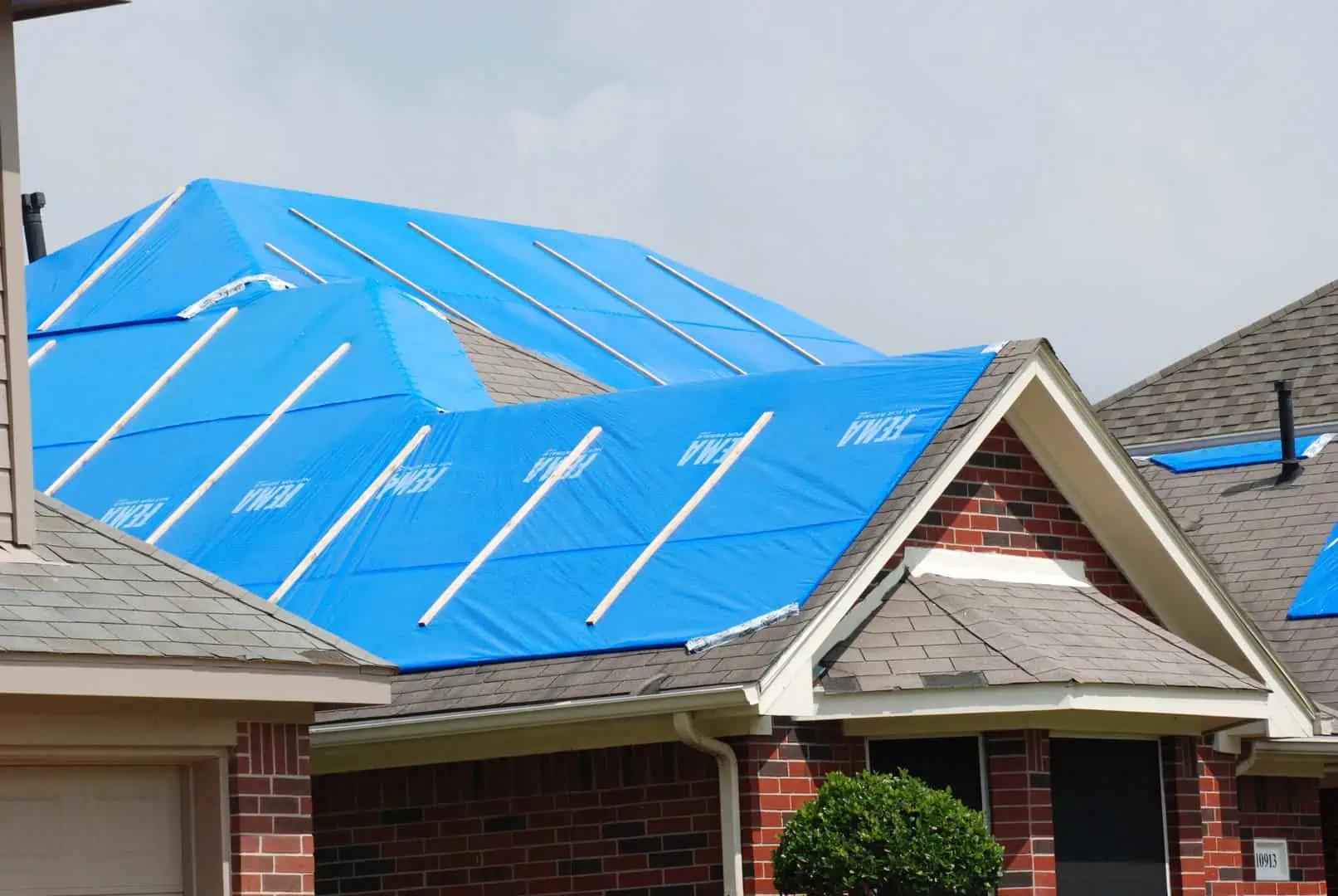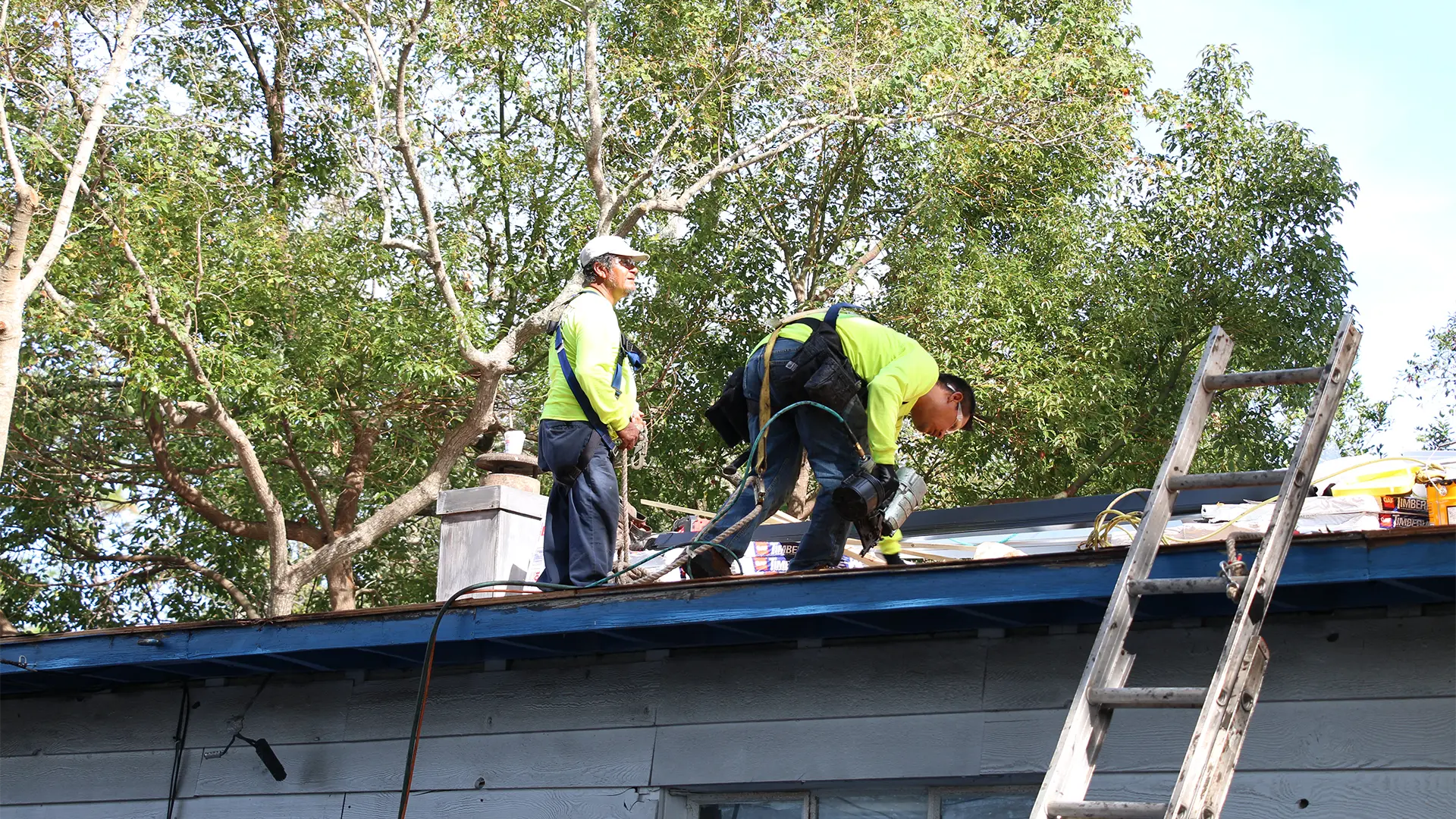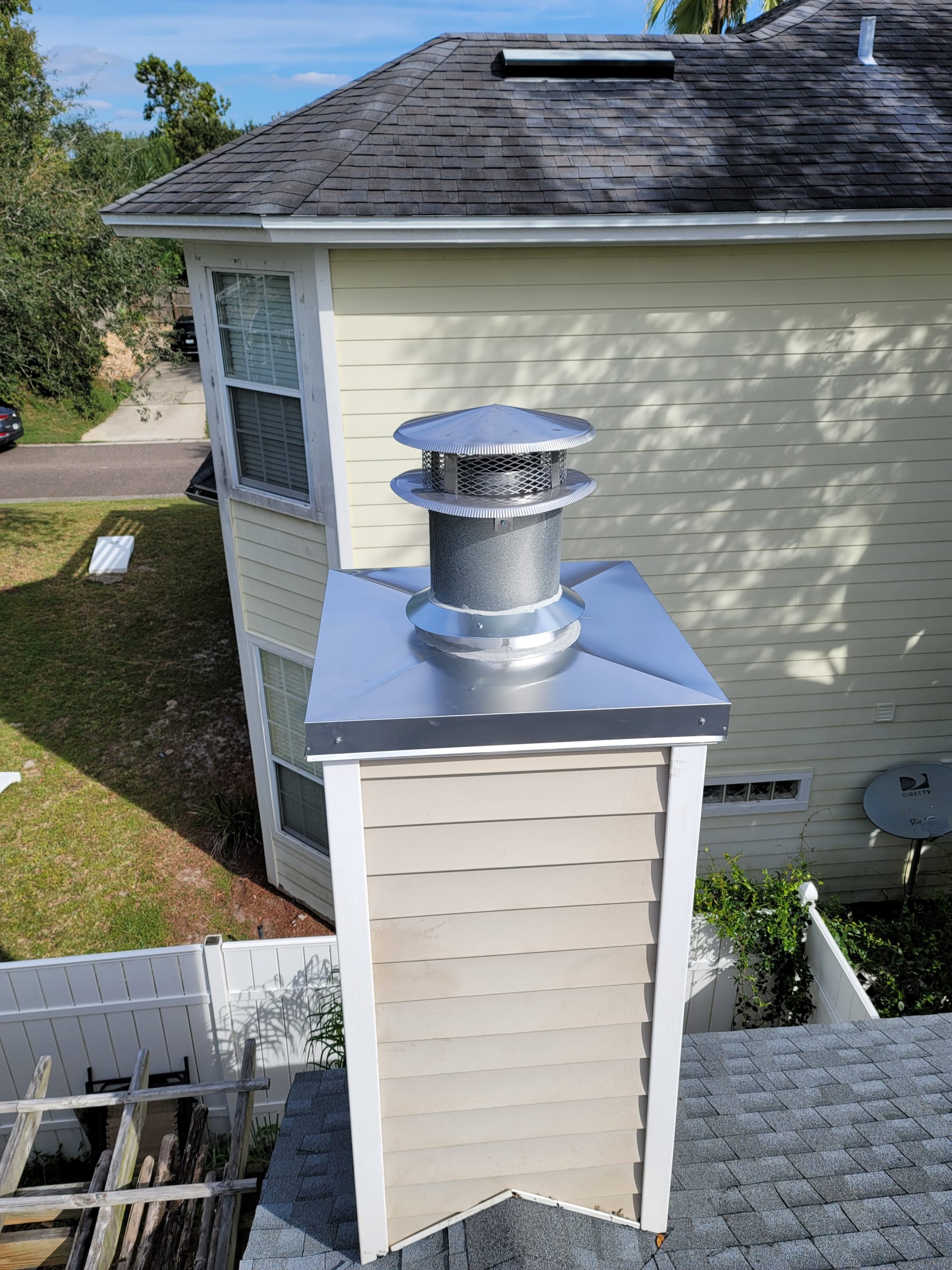Factors to Consider When Deciding Whether to Repair or Replace Your Roof
A full roof replacement is a huge project that most homeowners would like to put off for as long as possible. And that’s understandable. With the cost of both materials and labor consistently rising, having a new roof installed is a significant expense. A roof has a relatively long life span. It can last for 30 years or more, depending on the quality and the type of materials used. But storms, harsh weather, fallen debris, etc. can cause damage to your roof much sooner. When these problems occur, you may have to decide between having your roof simply repaired and going with a full roof replacement. Keep in mind everything we go over in this blog post is just general advice and you shouldn’t substitute it for a professional roof inspection.
Consider the age of the roof.
Different roofing materials have varying lifespans. Keep in mind there are a lot of factors that can shorten or lengthen the lifespan of your roof as well, such as environmental factors, general maintenance, storms and more. If your roof is nearing the end of its expected lifespan, regardless of the damage, a replacement might be the smarter long-term decision.
| Roofing Type | Average Lifespan (in Florida) |
|---|---|
| Asphalt Shingle (3-Tab) | 10-20 years |
| Asphalt Shingle (Dimensional / Architectural / Laminated) | 15-25 years |
| Asphalt Shingle (Luxury / Premium) | 20-30 years |
| Metal Roofing | 40-70 years |
| Concrete Tile | 25-50+ years |
| Clay Tile | 25-50+ years |
Amount of Roof Damage
You may simply be looking at a missing shingle caused by wind damage or a fallen tree limb, which can be repaired quickly and easily. Minor issues like a few missing shingles or a small leak around a vent pipe are prime candidates for repair. However, widespread damage, curling or cracked shingles, or signs of rot in the underlying structure all point towards a more extensive problem that necessitates a full replacement. Generally a good rule of thumb is that if more than 25% of your roof needs to be repaired, it’s better to just go ahead and get a replacement. If you find yourself having to frequently repair your roof that could also be a sign that your roof is starting to fail.
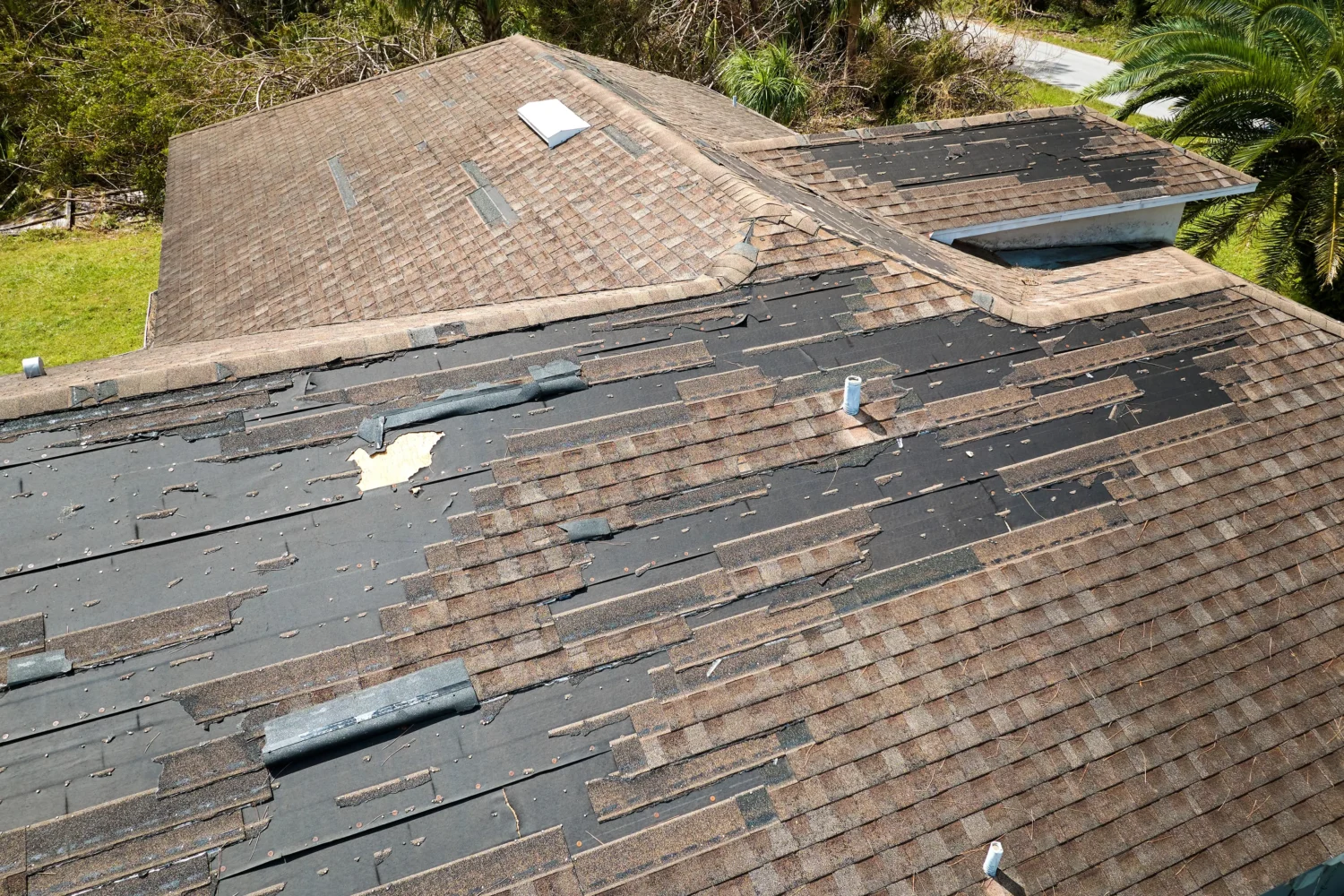
Roof Leaks
A roof leak doesn’t automatically mean a full replacement is necessary, but there are some situations where a replacement becomes more likely. Here’s a breakdown of when a leak might signal a need for a new roof:
- Multiple Leaks: If you have several leaks scattered across the roof, it suggests widespread damage that a single repair might not solve.
- Leaks Around Roof Edging or Openings: Leaks near chimneys, vents, or the roof’s edge often indicate problems with flashing (the material that seals these areas). Repairing multiple areas of flashing can be expensive and might not be a long-term solution.
- Leaks Accompanied by Other Issues: If the leak coincides with sagging roof sections, curling or cracked shingles, or signs of rot in the underlying structure, a replacement is more likely necessary.
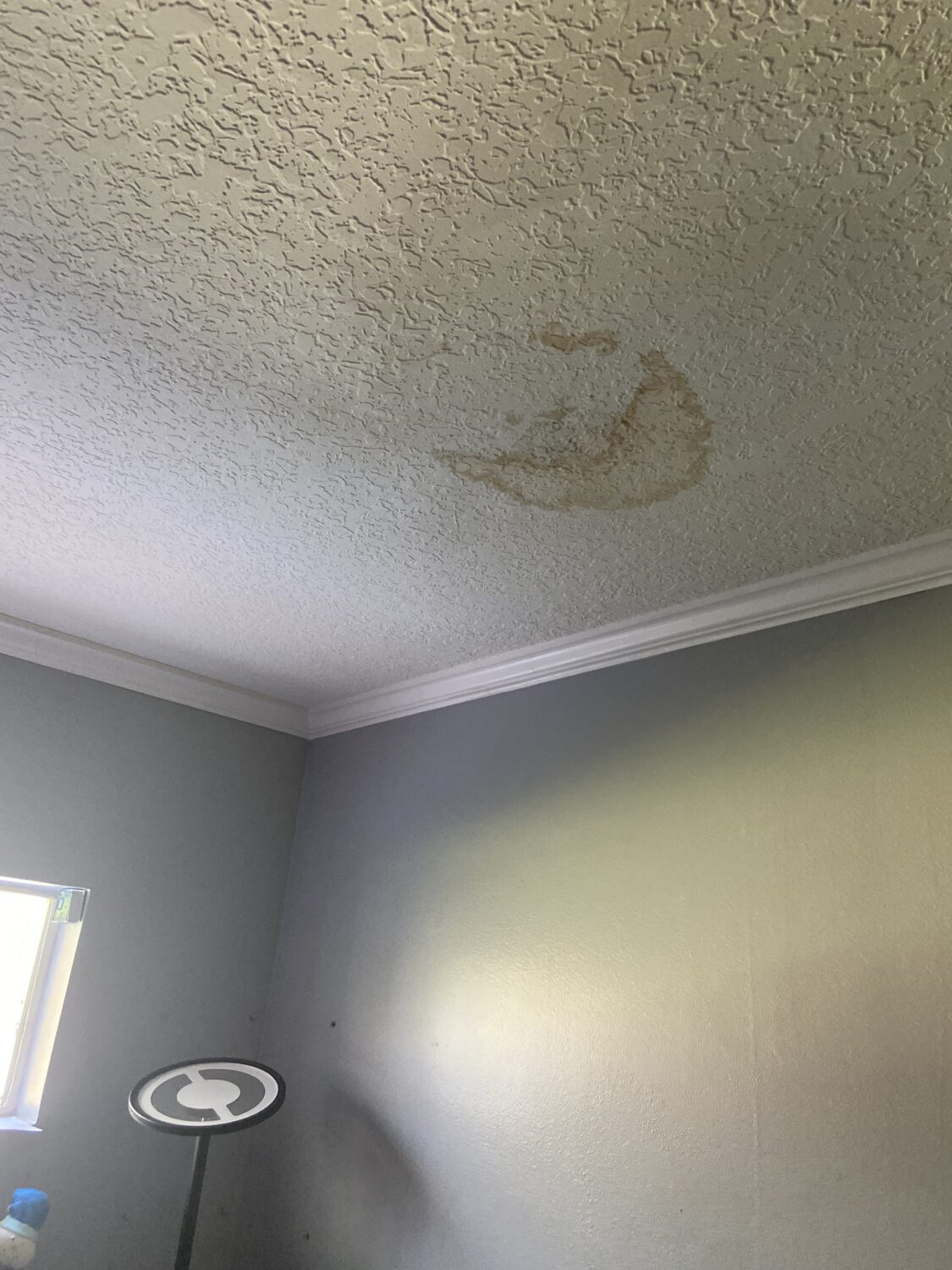
Budget and Future Plans
Roof repairs are generally less expensive than replacements. However, consider the cost-effectiveness over time. Patching a roof with multiple repairs might cost more than a full replacement in the long run. If you’re planning on selling your home soon a new roof significantly boosts curb appeal and resale value. On the other hand, if you plan to stay in your home for the foreseeable future, a well-done repair might suffice.
Home Insurance Savings
Replacing your roof can be a good idea for lowering your homeowner’s insurance costs, but it’s not a guaranteed way to get a discount. Here’s a breakdown of the factors to consider:
- Reduced Risk for Insurance Companies: A new roof, especially one with impact-resistant materials, is generally more resistant to weather damage from wind, hail, and rain. This translates to a lower risk of the insurance company having to pay out claims for repairs. As a result, they might offer you a discount on your premium.
- Discounts for Specific Materials: Some insurance companies provide specific discounts for roofs made with impact-resistant materials like metal or certain types of shingles.
- Check with Your Insurance Agent: Not all companies offer discounts for new roofs. Talk to your agent to see if your insurance company has a program and what specific materials qualify.
Look at the long-term costs of repair versus replacement.
Small roof repairs are usually not cost-prohibitive and can be done quickly and easily. If the damage is more extensive but limited to one side or area, partial reroofing may be an option. This can can save you thousands of dollars. However, on a cost per square basis, it tends to be a bit higher than replacing the entire roof. You’ll also want to make certain that you have a good match so that shingles blend seamlessly. Sometimes it turns out that even with only partial damage, it’s the wiser and less expensive option to replace the entire roof at once.
Roof Replacement vs Roof Repair Summary
The decision between a roof repair or roof replacement is not always an easy one. There are many factors involved, including the age and condition of the roof, the extent of damage and the short and long term costs involved. That’s why it’s important to have a reputable roofing contractor come and inspect the damage so you know exactly what you’re dealing with. Reliant Roofing is a GAF Master Elite certified contractor serving the Greater Jacksonville area. Contact Reliant Roofing today if you’re looking at repairing or replacing your home’s damaged roof.
